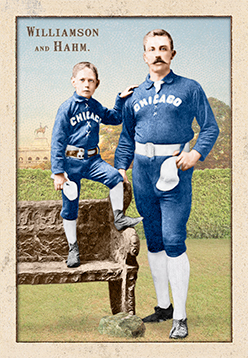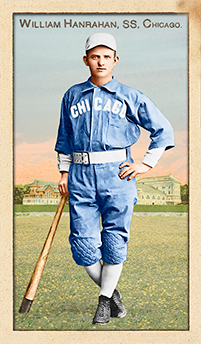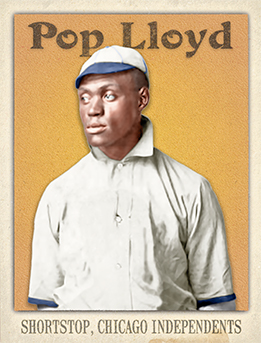
- Series: Diamond Heads '15
- City: Chicago
- Team: White Sox
- League: American League
John Frank Fournier (1889-1973) has been ranked by Bill James as the 35th-best first baseman of all-time. Yet, his inability to play the position competently left the managers of his five major league teams in a constant quandary. He got his ranking at the plate, not afield. Always a good hitter, as his career progressed, Jack put up numbers with the best of the era. His career BA was .313 in 15 ML seasons and he really soared when the Cardinals dealt him to Zack Wheat's Brooklyn Robins. From 1923-26 Fournier averaged .337 and slugged 82 homers. His performance with the bat only improved as he aged. A recent ranking of hitters in their Age 34 to 36 seasons shows Fournier among twenty of the best ever. In fact, only he and Gavvy Cravath failed to make the Hall after achieving what he did in his mid-thirties. And he was no slouch in his twenties. Jack began his professional endeavors with Seattle in the Northwestern League in 1908. The teenager knocked around the west coast until the White Sox came calling in 1912. In two years he was hitting .300 and rarely dipped below that threshold thereafter. Had his glove been as magnetic as his body, Jack may have played even more—he led the league in being hit-by-pitch three times.
- Fournier may well have been the most mis-matched player of his day. The stratagems of the Dead Ball era dictated many bunts, a particular weakness for the sturdy fielder. And one is left to imagine the hits he'd have had with a livelier ball
- Jack almost quit the game rather than report to the Robins. He relented and went on to the best years of his career, despite leading the NL in errors his first season in Brooklyn
- Series: Diamond Heads '15
- City: Chicago
- Team: American Giants
- League: Independent
- Hall: National Baseball Hall of Fame
John Lloyd (1884-1964) was one of the best shortstops in baseball history. Called by whites the “Black Wagner,” Honus himself deemed that association with Lloyd an honor. Lloyd was a pillar of black baseball with a lifetime Negro League BA of .343. He also spent 12 seasons in the Cuban League, batting .329.
- Babe Ruth called Lloyd the best baseball player ever
- Elected to Hall of Fame: 1977

- Series: 1880s: Diamond Duos
- City: Chicago
- Team: White Stockings
- League: National League
Ned Williamson:
Edward Nagle Williamson (1857-1894). A 3rd baseman & shortstop for 3 teams over 13 seasons, Ned was an above average hitter & excellent defender (despite his portly physique). Ned held the single season HR record (27 in ’84) until topped by Ruth’s 29 in ’19. Ned’s career was shortened by a knee injury he sustained while participating in Al Spalding’s baseball world tour.
In 1894, the Reach Guide convened a panel of 11 former ballplayers, including HOFer Jim O'Rourke, to debate who was the greatest baseball player of all time. The panel concluded that the honor belonged to Ned Williamson. Cap Anson himself called Ned "the greatest all-around ballplayer the country ever saw."
- Won 5 NL pennants
- Played in two World Series
- Once owned single season doubles record: 49
Willie Hahm:
Willie Hahm, also known as “Master Willies,” was a rarity among early baseball mascots. He was white. The youngster, said to have been barely able to talk when first brought to the dugout, was the diminutive talisman for the Chicago White Stockings in the mid-1880s. “The Chicagos have great confidence in him as a promoter of success and make a great fuss over him” said Louisville Colonels manager Jim Hart in one of the earliest interviews explicating the curious role of mascots in America’s game. After triumphing in the 1884 campaign, Hart said the Sox had paraded Hahm at the head of their procession in an open landau. The Chicago Tribune reported on a big match with the rival Wolverines on June 18, 1886. Al Spalding brought a trainload of boosters to Detroit in hopes of preventing the eclipse of Chicago’s record home winning streak. Downtown Motor City was treated to the spectacle of the White Stockings and 200 rabid fans marching from the depot to the Russell Hotel carrying broomsticks with Willie Hahm leading the throng. Later, per the Tribune, “The Chicagos were escorted to the ground by a band, and entered the field behind little Willie Hahm, who carried an immense broom on which were written the words Our Mascot.”
- Many of the early mascots were black kids dragooned by superstitious players such as NY’s Buck Ewing
Artist's Note:
- The uniform colors on this card were changed in April, 2017 from black to blue to reflect recent reliable research by Craig Brown & friends at Threads of Our Game. Two cards were previously released featuring black uniforms.
Auction History
Cartophilia
Old Judge Pose: 502-7

- Series: Beginnings: 1880's
- City: Chicago
- Team: White Stockings
- League: National League
Charles Wellington Sprague (1864-1912) pitched for nine teams from 1887 through 1891, three of which were in the major leagues: the National League’s Chicago White Stockings and Cleveland Spiders, and the Toledo Maumees of the American Association. His other experience was primarily in the Western Association with Jamestown of the New York-Pennsylvania League being his final stop. With the big clubs, Sprague had a respectable 10-7 record during three seasons with a 4.51 ERA. The lefty played a little outfield when not on the mound. For Toledo, Charlie was the fourth starter with Egyptian Healy being the ace. The team finished fourth in 1890, the year so many stars bolted to their start-up “Players’ National League of Professional Base Ball Clubs” (aka the Players’ League or “Brotherhood.”)
- The Goodwin guide editors note that Charlie’s Old Judge images are unusual in depicting him in two different team uniforms in the same season: Chicago’s White Stockings and Maroons in 1888

- Series: Beginnings: 1880's
- City: Chicago
- Team: White Stockings
- League: National League
William T. Hanrahan, nicknamed “Red,” played minor league ball from 1885 through 1898, primarily in the Western Association and the Eastern League. He began with Albany of the New York State League but moved west to Chicago in 1888, presumably to make his bid to play major league baseball in the National League.
The shortstop was photographed by Old Judge that year in a Chicago White Stockings uniform. However, Red never played for the team and is identified by Goodwin instead as a member of the Chicago Maroons in 1888 and the Minneapolis Millers in 1889. This makes Red one of a handful of Old Judge subjects who was lucky enough to be on a major league roster the day the Goodwin photographers showed up, but unlucky enough to be removed from the roster without ever having played a game for that or any other major league team. So close, Red! So close.
Red was a regular with both the Maroons and Millers, playing in over a hundred games for both clubs. The sketchy minor league stats don’t record every campaign, but he seems to have generally batted under .300, faring better in the 1890s when he returned east. He hit .307 with Albany in ‘93 and .306 with Rochester in ‘96. By then his plate appearances were in decline, getting into only 16 games with the Browns. Red’s final season brought his pro ball career full-circle as he wrapped it up with the Johnstown/Palmyra Mormans (aka Johnnies) of a newly reconstituted NY State League in 1898, which now included Pennsylvania teams.
- The Maroons and Millers were led by manager Moxie Hengel, the only two seasons he managed in pro ball. With Minneapolis, Moxie shared managerial duties with Sam Morton. It is said the two had a strange method, Hengel piloting the road games and Morton serving as the home field boss
- As a rule of thumb in the 1880s series, I always designate a player’s team as that for which he is uniformed in the photograph, even if he never played for the team.




